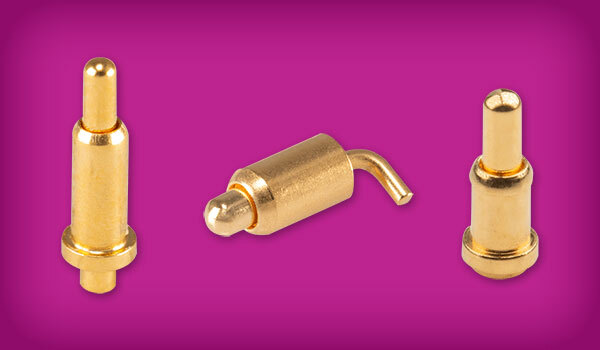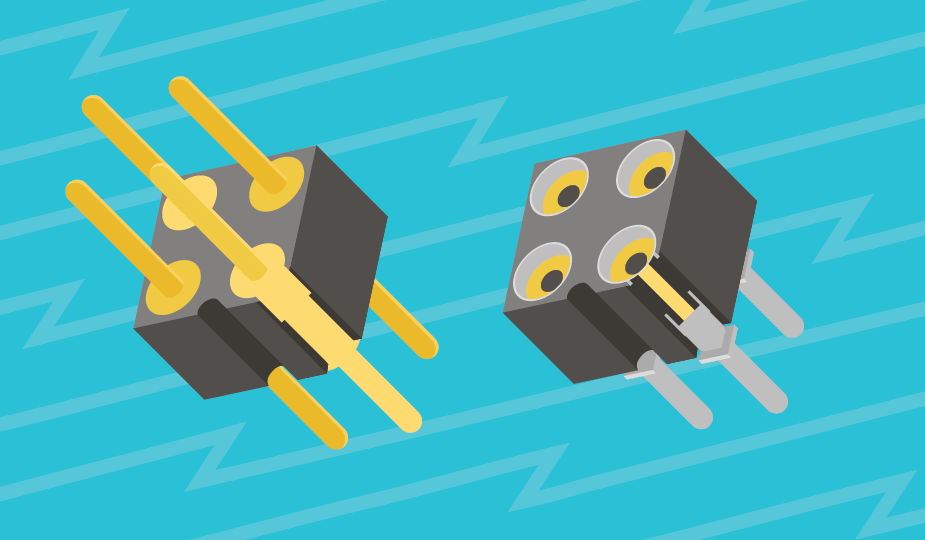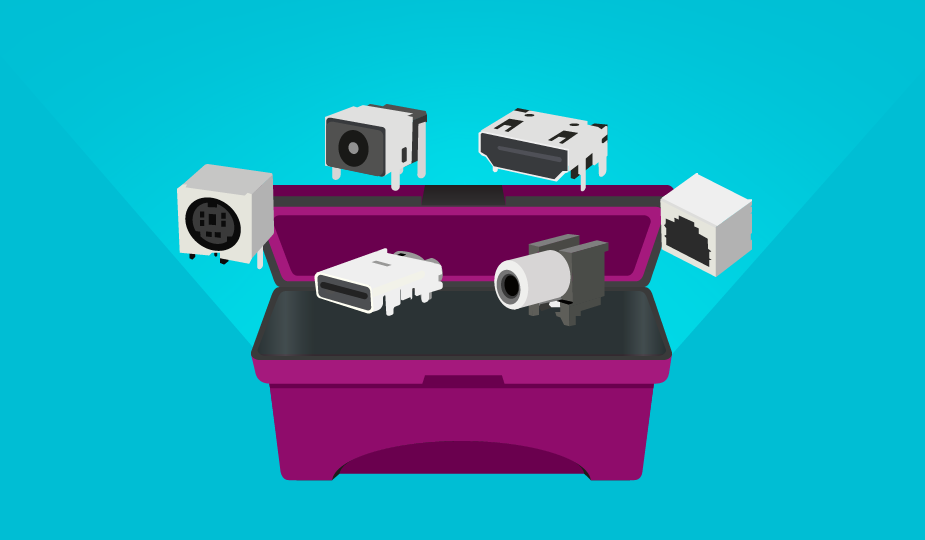ポゴピン:スプリングロード式コネクターの究極のガイド
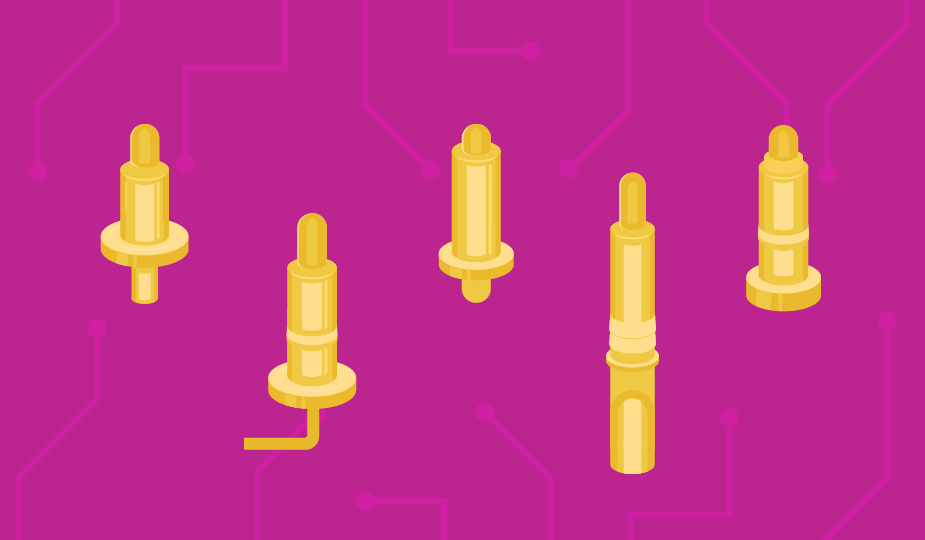
ポゴピンとは?
ポゴピンは、多くの電子製品やシステムで使用する、スプリング式小型の金属コネクタ装置で、接点を通して安全な電気的接続を確立して維持します。それらは管状で、内部のスプリング機構によって、ミニチュアポゴスティックのように見えることからこのような名前になりました。
そして、疑問に思うかもしれませんが、オリジナルのポゴスティック玩具は、マックス・ポーリグとアーンスト・ゴッツコールによって、それぞれの姓の最初の2文字を使用して作られました。ご想像通り、ポゴスティックとポゴピンの類似性はその名前と類似した機械的な動きです。Same SkyのポゴピンとPCBピンのラインナップをご覧ください。
ポゴピンはいつ発明されたのですか?
エレクトロニクス業界で使用されているポゴピンは、1970年代初頭にベルラボで発明され、半導体試験装置での使用の受け入れと、小型化、精密化、再現性のある性能に対する要件が明らかになりました。安定性、現在の容量、サイズが継続的に強化され、消費者、産業、医療市場における幅広い電子機器での使用に適しています。
ポゴピンはどうやって作られるの?
ポゴピンは、バレル、プランジャー、内部コイルスプリングで構成されています。これらは通常、真鍮または銅合金でできており、しばしばニッケルのコーティングが施されています。耐接触性を向上させるために、金やその他のメッキ金属も提供されています。これらは通常、フィクスチャー内で密にグループ化され、回路基板上の複数の接点、または頻繁に嵌合および非嵌合されることが意図されるコネクタを可能にします。
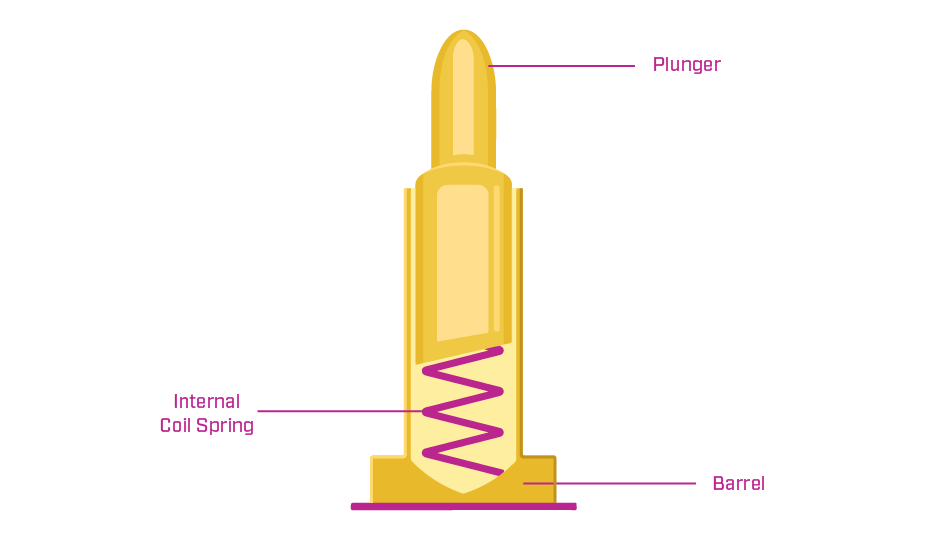
ポゴピンを使った設計の利点とは?
すでに述べたように、設計でポゴピンを使用すると、他の機械的接続デバイスよりも費用対効果が高くなります。価格設定以外にも、次のようなエンジニアリング上の利点も数多くあります。
- ボードスペースと高さの節約
- 多くの嵌合サイクルで機械的衝撃や振動に強い、長期使用向けの堅牢な設計
- 信頼性の高い接続を実現するハイコンタクトトラベルにより、ボードの拡張/収縮が可能
- 精密組立用機械取付
- 自動アライメントの利便性
- 嵌合レセプタクルに対する一定力で接続損失を防止
- さまざまなボード構成に簡単に適合
- さまざまな製造プロセスに対応
ポゴピンは、さまざまなサイズ(長さと直径)、材料、動作力、現在の機能、パッドレイアウト、プランジャータイプも用意されており、困難なエレクトロニクス用途にも日常的なエレクトロニクス用途にも適しています。
ポゴピンのスタイル
さまざまなタイプのポゴピン接続ソリューションから選択でき、アプリケーション、ライフサイクル要件、カスタマイズのニーズに依存する機能を提供します。以下は、あなたのデザインに利用可能なより人気のあるポゴ機能のリストです。
- 高電流: 通常は2~8アンペアですが、より高い定格が利用可能です
- 高頻度: 最大10 Gbpsまで処理可能
- 防水: 水や湿気に耐えられる効果的なシーリングメカニズムを採用
- 磁気: 磁力を使用して接続と偏波を作り、維持します
- 低スプリング力: 接点に通常のスプリング力よりも小さいスプリング力を加えます
- ローラーボールコンタクト: 接点が移動する時に連続信号を確保するために、スプリングプローブの端部にボールを使用します
- ねじ: プランジャーまたはバレルにネジ式設計を採用しているため、ボードやデバイスに固定できます
- はんだカップ: ピンの背面にケーブルを取り付けるための小さなはんだカップを提供します
- ダブルエンド: ピンの両端に組み込まれたスプリング式接点
- 垂直または平底: 基板間接続を可能にする回路基板から垂直に上昇するピン
- ライトアングル(水平): 回路基板に対して90°のピン方向を提供し、回路基板への水平デバイス取付けを可能にします
- フローティング: 一方の端に標準スプリング接点、もう一方の端に曲面を採用し、両面を接点として使用できますが、過圧を防止します
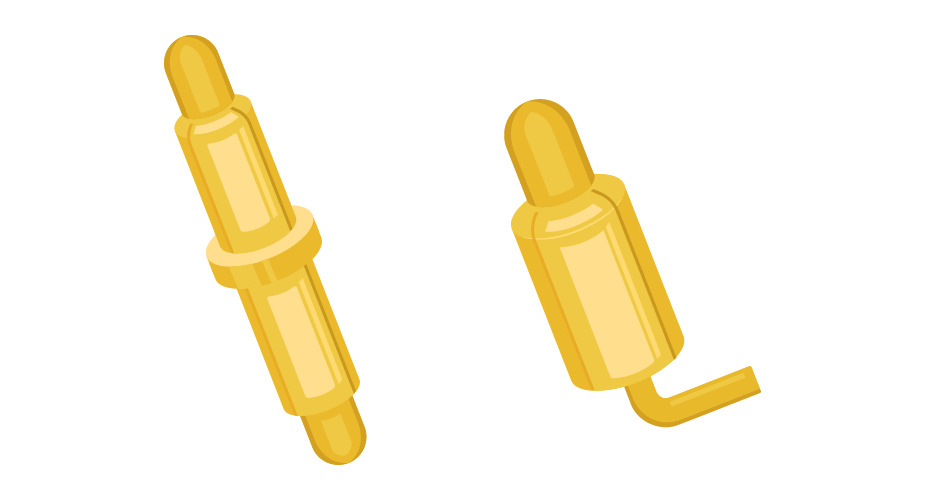
ポゴピンの取り付け方法
ポゴピンは、通常、特定の用途で基板または固定具に取り付ける個別のピンとして調達されます。そのため、ニーズに合ったカスタム相互接続ソリューションの個々の部分です。ただし、設計によっては、絶縁材に取付けられ、取付けハードウェアで使用可能なポゴピンを使用して、既製の個々のコネクタアレイを使用できる場合があります。
ポゴピンを使用して独自のボードや固定具を構築する場合、プレスフィット、スウェージ、圧着、はんだ付け、はんだ付け不要のピンを含む、さまざまな挿入タイプがあります。使えるマウント技術には、表面実装、スルーホール、ワイヤーマウント、フリーハンギングがあります。
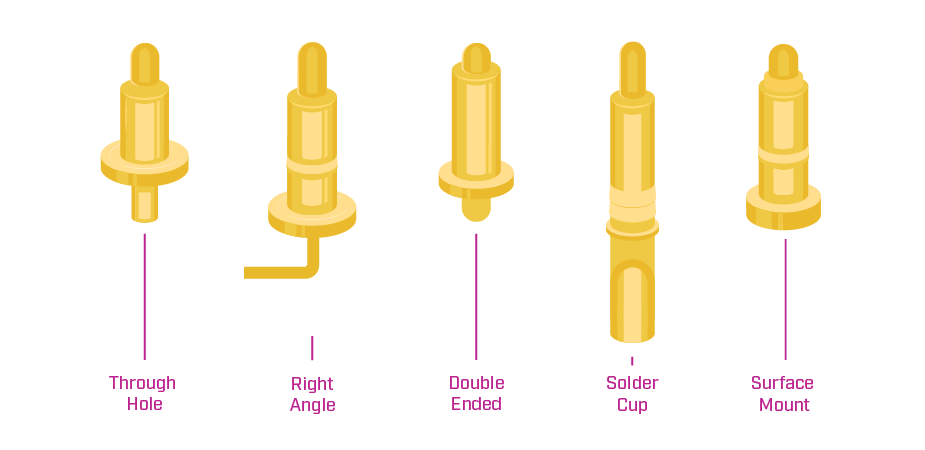
ポゴピンレセプタクルまたはターゲットとは?
電気コネクタの基本的な機能は、2つ以上のデバイスを結合したり嵌合することです。そのため、コネクタには接続できる互換性のある固定具が必要です。ポゴピンは、レセプタクルまたはソケットと嵌合するか、回路基板上の特定のターゲットに着陸することができるという点で少し異なります。ターゲットは、指定された構成要素、回路基板のメッキされた領域、またはコンピュータチップを試験するために使用されるカスタムチップレセプタクルです。
ターゲットの機能は、ポゴピンが着地し、接続が取り外されるまで安定した状態を保つことができる信頼性の高い電気接続を提供することです。ポゴピンのほとんどのメーカーは、さまざまなスタイルのレセプタクルまたはターゲットも提供しています。
ポゴピンの設計上の考慮事項
他の多くのコネクタと同様に、設計で使用する正確なポゴピンを決定するには、エンジニアリング仕様を設定する必要があります。以下に検討すべき点を示します。
- サイズとフォーマット: リードサイズ、ピン径、ピン形式(丸型、角型、角型)
- コンタクト材料: 真鍮、銅、ニッケル、青銅
- コンタクトメッキ: ゴールド、シルバー、ニッケル、パラジウム、亜鉛、スズ、鉛
- 電気測定基準: 接触抵抗、電流定格
- 動作: プランジャサイズと作業高さ(プランジャ移動用)と寸法精度(公差)
- 物理的測定基準: 初期接触動作力と中圧縮動作力
- その他の要因: 熱、寒さ、衝撃、振動、腐食性雰囲気、湿気、その他の厳しい環境条件への暴露
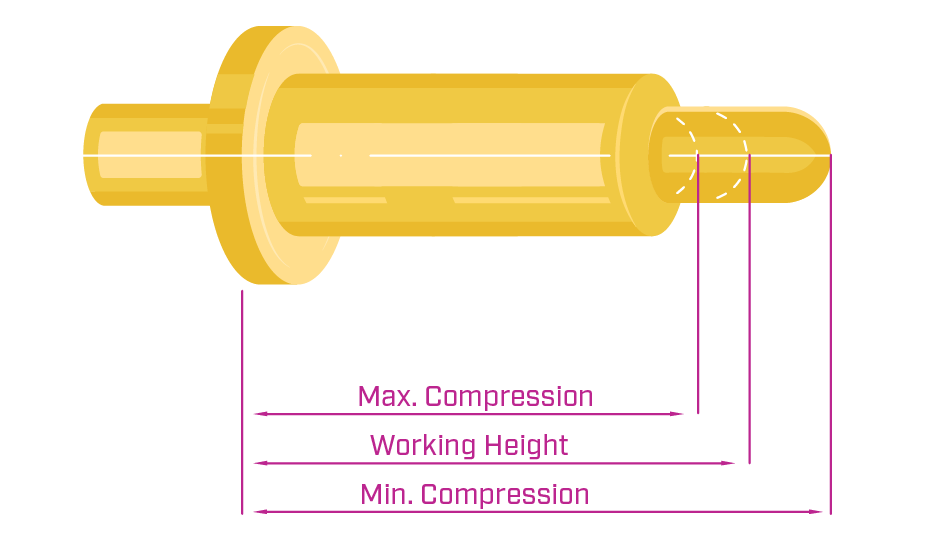
ポゴピンの一般的なアプリケーションとは?
電子機器製品で使われているその他の多くのデバイスと同様に、ポゴピンは一晩のうちに新しいアプリケーションを次から次へ生み出しているように見えます。より明白なアプリケーションとして、接点からの一定の圧力が堅牢な接続を保証する電気接続を行う必要がある場所などもあります。これには、基板対基板接続、データや電源接続が必要な消費者製品、バッテリードックや充電器、ポータブル医療機器、PCBおよびICテスト、その他の機械製品が含まれます。データ信号または充電電流のフローのために一時的な接続やドッキングを必要とするほぼすべてのデバイスは、ポゴピンを使用した設計ソリューションを採用することができます。
概要
ポゴピンにより、デバイス間の電気的接続を一貫して確実に行うことができます。そのシンプルな設計と機能は、何千回もの嵌合と嵌合解除サイクルを通して耐久性を保証し、小さな接続ミスアライメントを補正することができます。また、これはコスト効率とスペース効率に優れているため、多くの最新の電子アプリケーションに最適な接続ソリューションとなっています。
主な取り組み
- ポゴピンは、2つのデバイスや回路基板間に信頼性の高い一時的な電気的接続を作成するために使用されるばね式接点ピンです。
- ポゴピンは3つの主要コンポーネントで構成されています。プランジャー、バレル、内部スプリング - 圧縮時に一貫した接触を維持するように設計されています。
- ポゴピンは、繰り返し嵌合サイクルが必要なテスト、充電、モジュラー接続に最適です。
- これらは高い耐久性を提供し、ライフサイクルはしばしば数万回の圧縮を超えます。
- 一般的なポゴピン構成には、シングルピン、ピンブロック、カスタムアレイがあり、サーフェイスマウント、スルーホール、パネルマウントのオプションがあります。
- ポゴピンは、優れた機械的弾性と、低接触抵抗など、安定した電気的性能を提供します。
- ポゴピンのアプリケーションには、バッテリー充電ドック、テスト固定具、ウェアラブル、医療機器、通信システムなどがあります。
- 主要なポゴピンの選択基準には、ストローク長、電流定格、めっき材料、機械的公差が含まれます。
- 過酷な環境条件では、導電性と耐食性を高めるために金メッキのポゴピンがよく使用されます。
